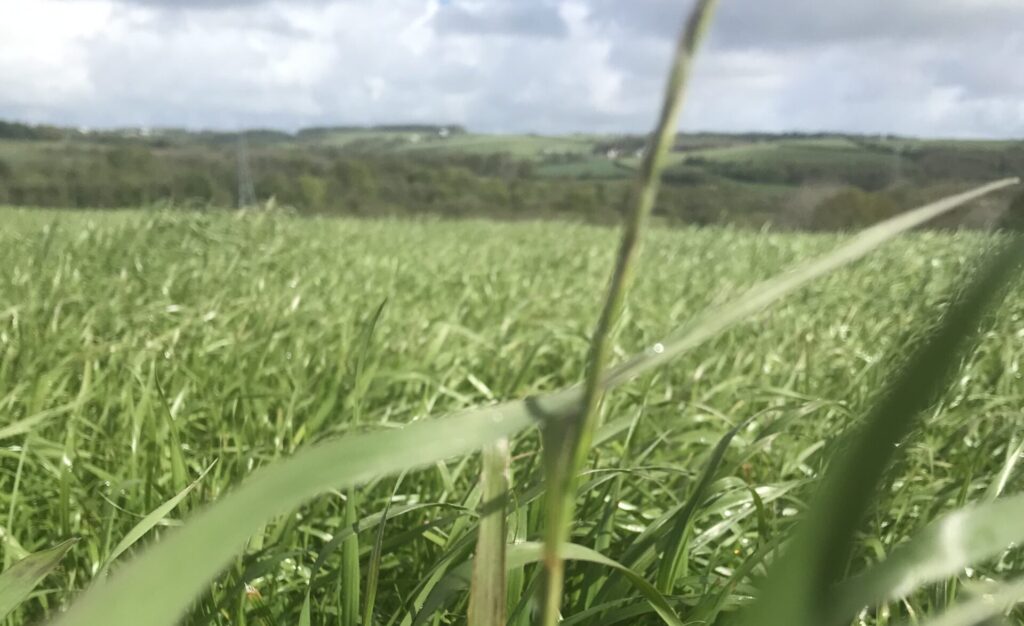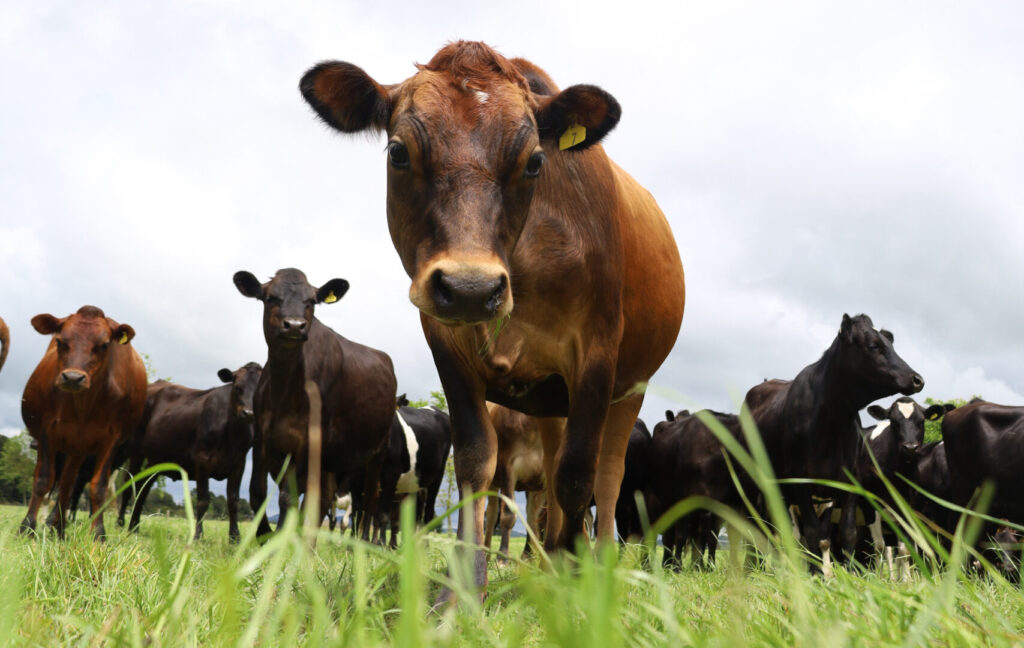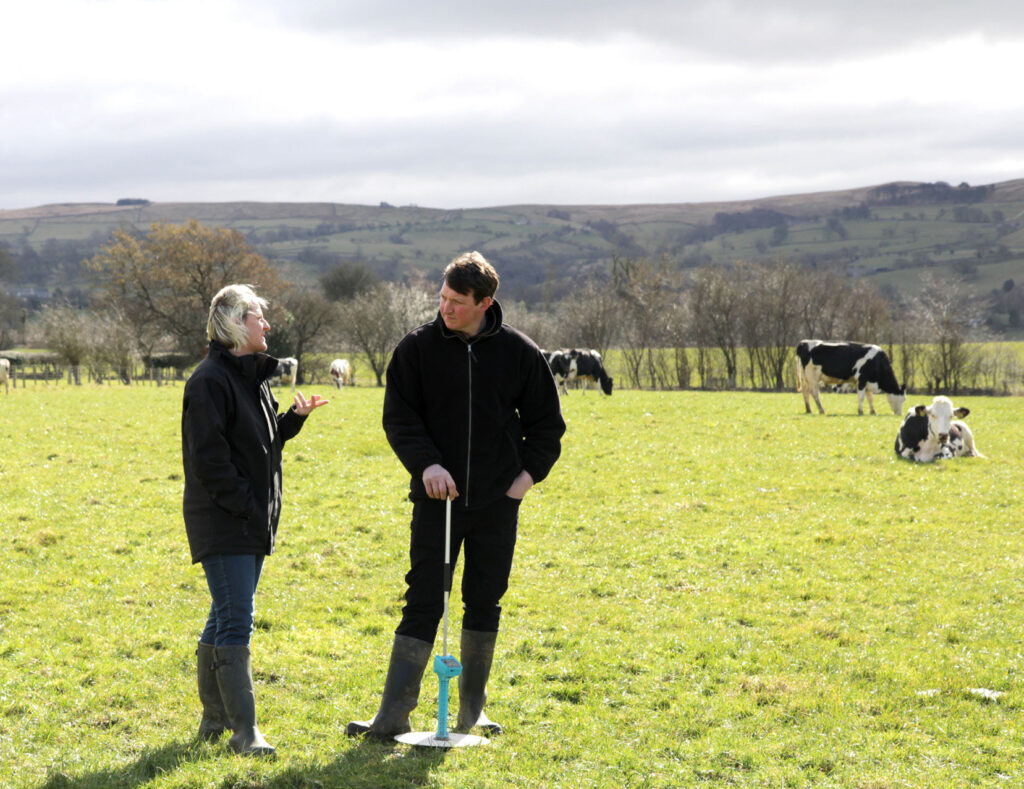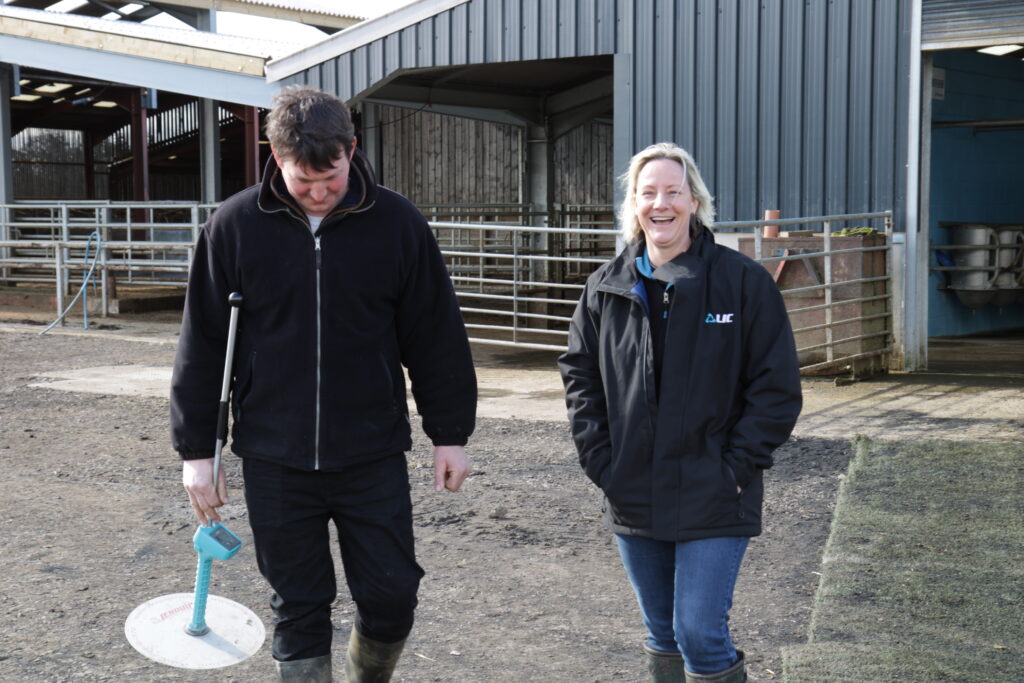Thanks to LIC FarmWise consultant Brent Boyce, flexible milking regimes are growing in popularity within the New Zealand dairy industry. This increase in popularity has drawn the attention of DairyNZ who, over the past two years, have undertaken trials to find the key requirements for the system to succeed
Brent first used a variable milking regime in November 2001 – due to tough climatic conditions and laminitis – and has been advocating it ever since with his clients. With less than 50% of New Zealand farmers now milking twice a day all year-round, the term ‘flexible milking’ is appropriate as farmers change their milking frequency throughout the year.
The outcomes of the flexible milking trial
The trial by DairyNZ looked at four different applications of milking frequency to see the impact on milk production. These different applications were:
- full season at twice a day
- moving to 3 in 2 in March (NZ autumn) providing 64 days at this frequency
- moving to 3 in 2 in December (NZ summer) providing 155 days at this frequency
- having cows on 3 in 2 milking frequency for the full season.
The trial saw a 22KgMS/cow difference between the full twice a day system and full 3 in 2 system, with the majority of this loss in solids coming from protein production (8kg drop in fat 14kg drop in protein). It should be noted that this trial was undertaken on the Lincoln University research dairy farm, which is a 72ha irrigated farm. This means the cows were never put under pressure from walking or feed quality of the grass. It’s for these reasons that Brent has also seen the opposite results when his clients have changed milking frequency. The energy saved through removing one trip to and from the parlour every two days has resulted in an increase in milk production on a farm level – and more importantly at a cow level.
Brent is now of the opinion that farmers can implement even greater levels of flexibility into their milking regimes, as cows are resilient and adaptive to change. At the same time DairyNZ is looking at real farm outcomes of doing a milking frequency of 10 in 7 – this regime sees a set milking time for each day on the 3 in 2, but with all milking across the weekend once a day.
The benefits of flexible milking regimes
Brent is taking this further as there are a number of different milking frequencies between fully twice a day and fully once a day. This thinking has resulted in farmers changing their frequency to suit their farms, and this could mean that some paddocks are designated as once a day paddocks due to their contour or the steepness or distance of the tracks to access these paddocks. It is through this implementation of the concept that Brent is seeing an increase in production.
An issue that is met by dairy farmers the world over is attracting and keeping labour. This is partially due to the fact that farming is a seven day a week business and that we live in a weekend oriented society. To compete against other industries, dairy farmers need to provide their staff with competitive work hours. This can be met through either increasing labour levels to allow for all staff to get regular time off, or by reducing the workload to free up time for all staff to get regular time off. So is implementing a flexible milking regime the answer going forward to provide a better work life balance for staff?
The below table shows the number of milkings that are saved and the associated hours for different milking regimes. When we focus on the red column, this regime reduces the number of milkings by 133 within a year, and of these, 52 will be at the weekends. If these only required one relief milker then there’s a saving of £1,300 (at £25 per milking). For those who struggle to get relief milkers this reduces your reliance on them, and also has the ability to move your milking times to a time of day that opens you up to more potential workers.
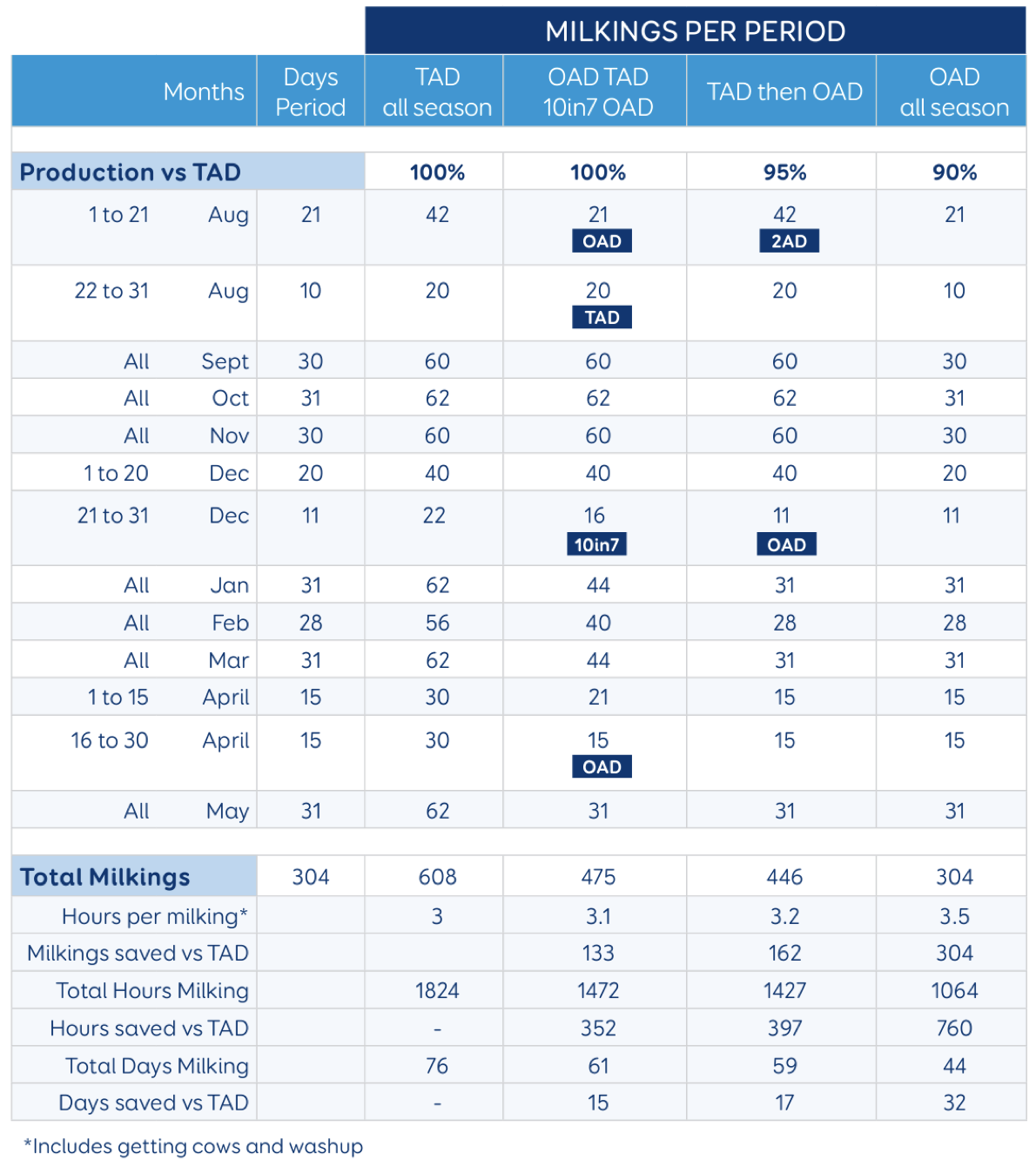
The benefits are not only felt by the staff but also the cows. Through undertaking a milking regime shown in the 10in7 column in the attached table, you’ll also have the benefit of improved body condition score of the cows, and mating performance. With over half of the herd having a period of once-a-day milking, this will help to reduce the level of condition score loss at the beginning of the season. Leaving these cows better placed to meet required condition score come mating and therefore get in calf. Moving the cows to 10 in 7 and then once-a-day will help to ensure cows are at the correct body condition score come drying off, as they’ll naturally put on more condition under these regimes. In turn this could result in achieving more days in milk.
For many, these innovative approaches to structuring milking times and work levels have not impacted on production as much as you might expect. Some of this can be explained by the geography and layout of the farm as mentioned above, the rest has come down to science. LIC scientist, Steve Davis, explains that at about 16 hours after milking, milk production starts to decline and then recovers slowly when the cows are next milked. So, on a once-a-day regime, milk production is slowing in the last 8 hours of the 24 hours but then recovering for the first 8 hours of the next 24 hour interval.
In addition, the rate of loss of udder tissue increases which ‘locks in’ the yield loss for that lactation. The advantage of 3-in-2, or its variations, is to keep the milking interval as short as possible (usually 16-18 hours), which minimizes the loss in production.
Listen to this webinar to hear more about your options. This LIC Europe webinar features Brent Boyce and Steve Davis, as well as Emer Kennedy from Teagasc, who is looking after OAD trials in Moorepark, and Martin Ryan, who currently milks 3in2 on one farm and OAD on his second unit in Co. Tipperary.
